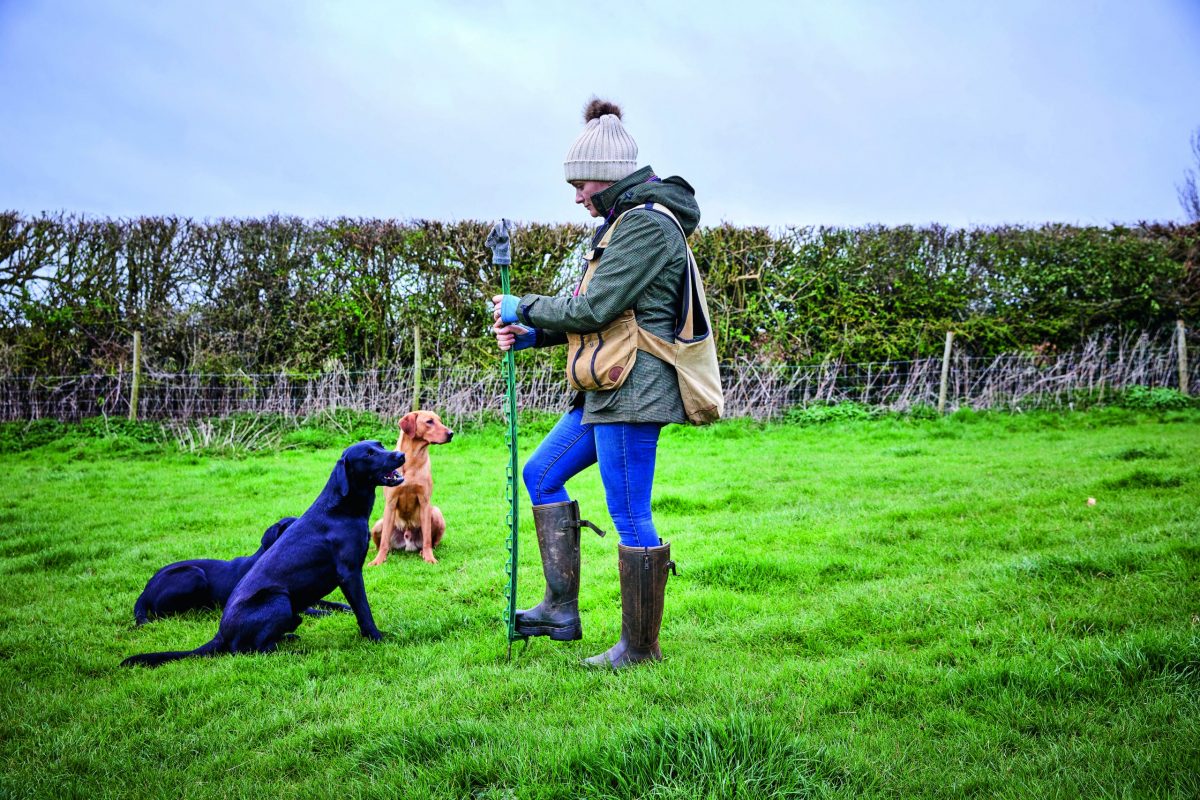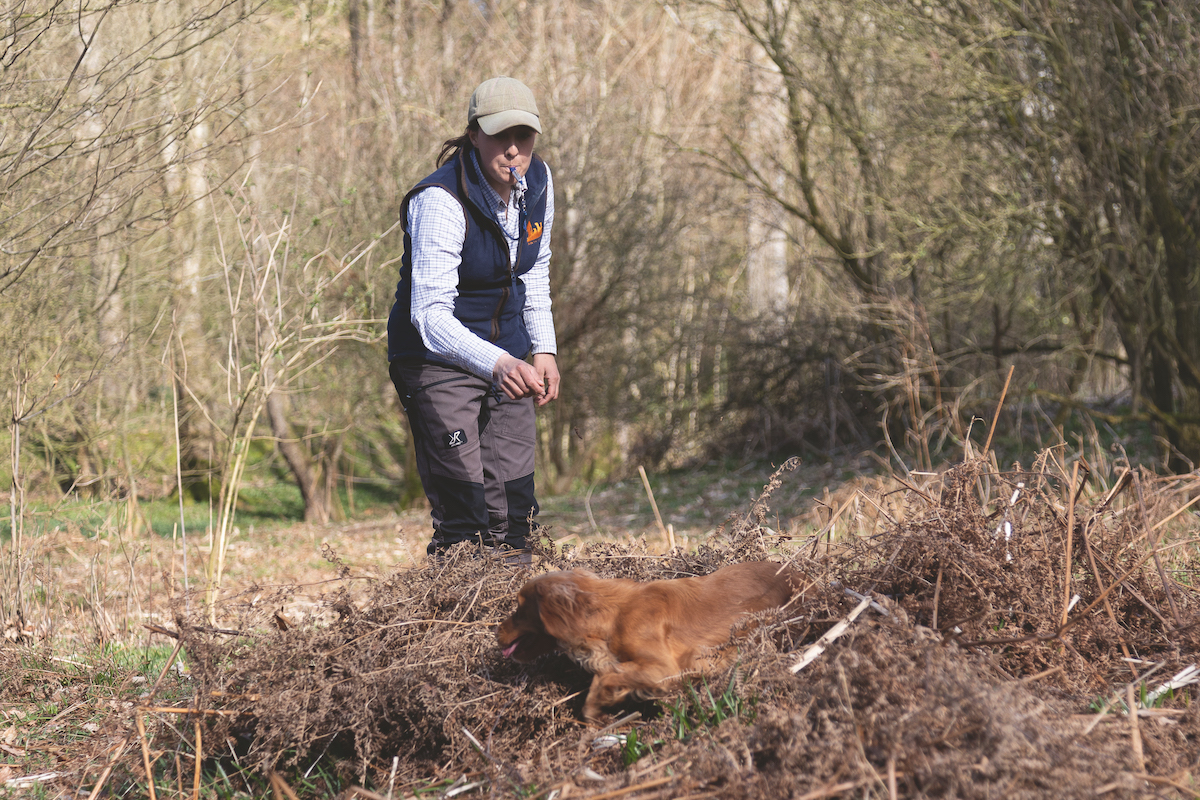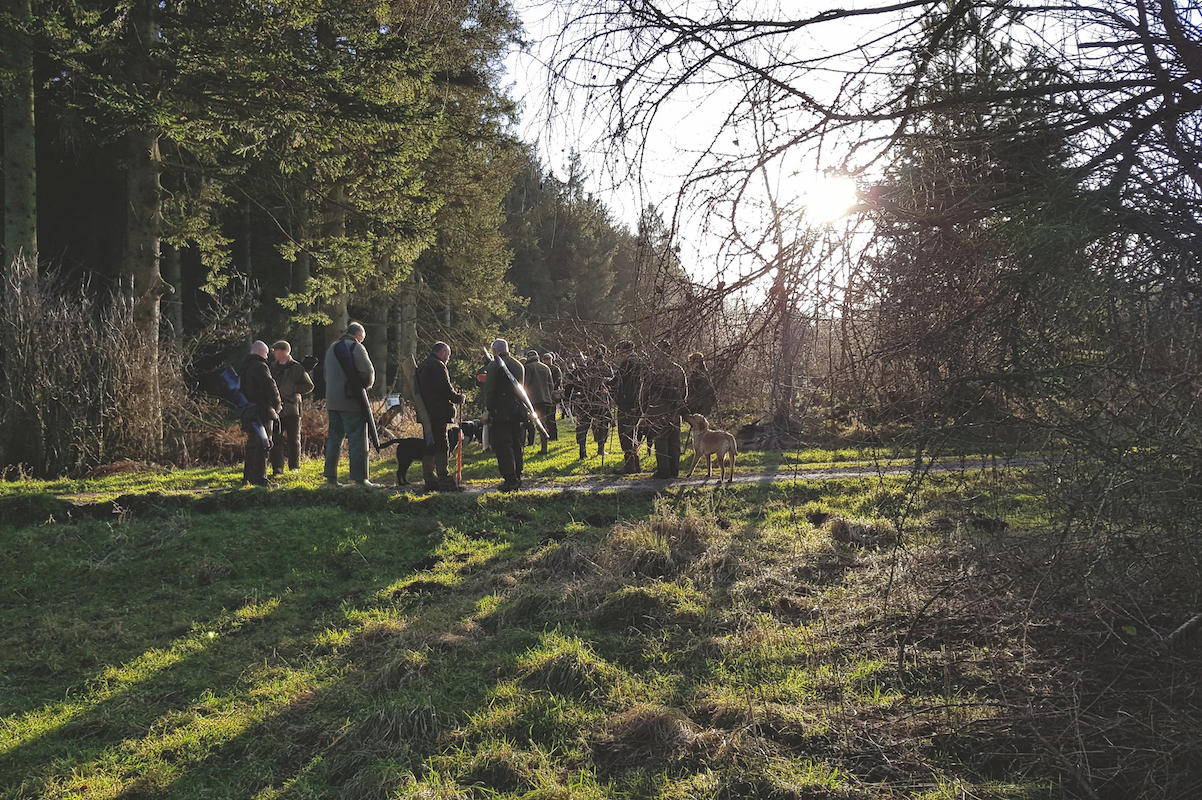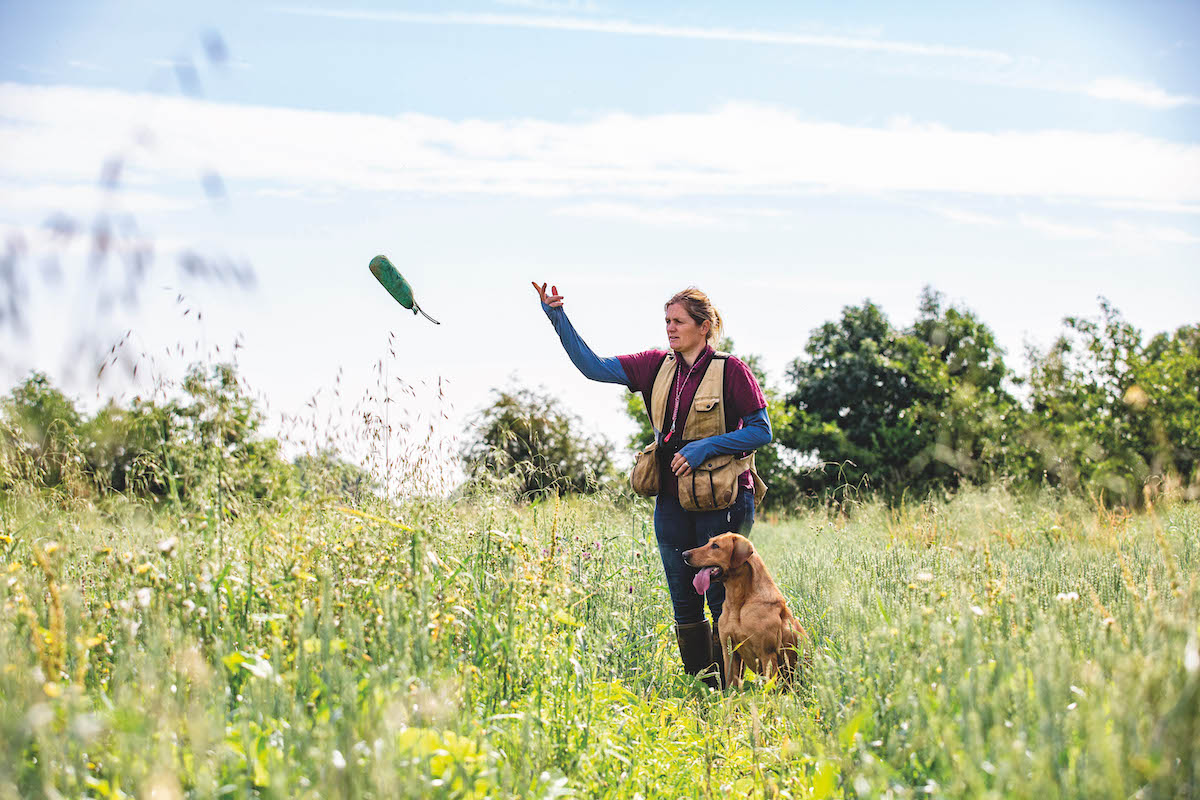Teaching a dog to engage their scent detection
Ellena Swift teaches young dogs to understand that engaging their powers of scent detection gives them the best chance of success

To get a dog confidently holding an area and conducting a thorough hunt, use a marked-out hunting square, about 15 yards wide and long
In my previous training article, we were looking at getting the dogs going nice and confidently in a straight line to an area to hunt for a retrieve. It is equally vital that a dog can hunt for itself and hold an area to do a thorough job.
There’s nothing worse than seeing a dog run round with its head in the air simply hoping to eventually bump into a retrieve. As youngsters, very often this is exactly the tack they will take when sent for a retrieve. So this month’s drill will establish the skills your dog will need to successfully hunt an area.
Although a young dog might naturally have a very good nose, it does not mean that it knows how to use it. So we need to help our dogs understand that they must engage their nose to give them the best chance of finding something. Depending on the breed, the dog will use its nose in different ways. It is important that you understand that and know what your breed of dog is meant to do.
For example, a spaniel is a ground-scenter, so will put its nose firmly on the floor and find scent this way. A golden retriever is an air-scenter, so has a very different hunting style and holds its head higher off the ground.

Allow the dogs to watch an item being thrown into the marked-out square
Don’t overhandle your dog
Another undesirable trait for a dog when hunting is being ‘sticky’. When asked to hunt, the dog should do so until they find a retrieve or are recalled and given another command.
However, dogs that are overhandled, or which have had their natural drive crushed, will hunt for a short period then stop to look at the handler for further instruction. Either that or they simply give up and come back. Neither of these are desirable and the robotic dog is no more effective than a totally out-of-control dog. These exercises will help your dog cover the ground they have been asked to hunt more effectively.
More on gundog training
- Eye contact with dogs: it’s vital for good training
- Dog training with a whistle: some frequently asked questions
- Crate training a puppy – how to do it right
To start the youngsters off with this task, I am going to introduce a small hunting square. I mark out a square about 15 yards wide and long. I hide some small items, such as disc dummies and tennis balls, to be found within the square.
At this stage, your dog should already have a basic understanding of the hunt command or whistle — it is personal preference as to whether you use a verbal command or whistle. I still use my voice with the command ‘hi-lost’. Eventually, I will teach them the hunt whistle as well, so I can use that rather than have to shout when at distance.

On the ‘hunt’ command, the dog should immediately put its nose to the floor and begin to hunt the area
Part of the reason I use my voice to begin with is so I can help the dog, depending on its natural personality. If your dog is a real livewire and naturally hot, your challenge will be to slow them down and get them to hunt a bit more methodically and settle. Your voice can influence this. Using your hunt command calmly and slowly encourages that kind of energy in your dog.
If your dog lacks a little bit of confidence, use a higher-pitched tone and speak a little quicker to encourage excitement and urge them to continue hunting. (Read our guide on how to train a spaniel puppy that lacks confidence).
When using a whistle, you cannot show those different emotions to help a young dog. With mine, I am still using a lot of calm signals to help them slow down and keep a cool head, as they are both a little lively.
I let each dog see me throw an item into the square and then walk them away. I have already hidden three items within the zone. I walk them around to the other side, sit them up then ask them to hunt. It is important your actions say ‘hunt’ rather than a cast.
Remember, we are asking the dogs to hunt, not run. So if they spring out the blocks and run in a straight line with their head up, it is likely that they didn’t understand you and think you are casting them for a retrieve. If this is the case, go back a step and re-teach the hunt command, so they fully understand the difference between a cast and a hunt.
Getting scent detection going in the right direction
Your dog should immediately put its nose to the floor and hunt that area. Allow them to find something then set the dog up to start hunting again. This time, sit them next to the square, facing you with the zone to the side of them. Take a few steps back and indicate with the appropriate hand to hunt in that direction. They should immediately put their nose down and hunt the area indicated.
Repeat this exercise then add a little recall and stop command. So sit the dog 30 yards behind the square and recall them towards you. As they run alongside it, ask the dog to stop and indicate to hunt that direction. It is vital they are successful every time they hunt, so they do not take off and leave the area or give up. Once they have mastered this on both left and right, you can start to introduce a second square a few yards from the first. Repeat the exercises so the dog is happy to hunt there.
When you then start to use the two boxes together, only have something to find in one of the two. This way, if the dog hunts the incorrect direction, they won’t be rewarded for going the wrong way. Mix it up with which box you ask them to hunt. Once they are confidently hunting both from distance, hide one item in each.

Asking the dog to hunt one of two boxes adds a further layer of complexity to the exercise
A helping hand with scent detection
It is good to be able to predict when a dog is about to make a mistake, as that way you can meet it head on. For example, when you want the dog to hunt left-handed, lean your body a little that way and watch the dog’s body language before you give that hunt command. If the dog starts to lean in the correct direction or perhaps look there, the likelihood is they are going to go the correct way.
If they keep glancing the wrong way or are looking stressed rather than confident, walk forwards before you use the hunt command.
Remember, it is easier to help the dog the closer you are to it. Once they are really flying with this exercise, you can start to mix it up. Use your squares, but have them at different places along a straight. Give your dog a memory retrieve up the straight, stop them and hunt them left or right to a hidden retrieve.
To ensure they don’t start to ask questions or become sticky, don’t overdo the stopping and always cast them for the memory retrieve at the end, so they finish on a retrieve they power to with lots of confidence.








